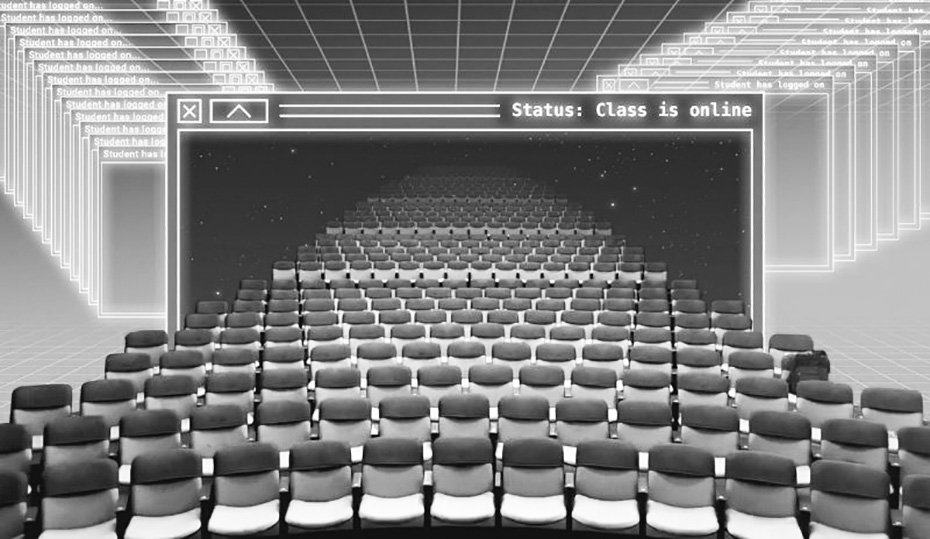
By Melody Warnick
Stefan Duma’s Concussion Perspectives class started with 50 students. But it didn’t stay that size for long.
The following semester 100 students enrolled. Then 250. Then 500.
Even though Concussion Perspectives doubled in size each time Duma, the Harry C. Wyatt Professor of Engineering, director of the Institute for Critical Technology and Applied Science, and founder of Virginia Tech’s prestigious Helmet Lab, taught it, the clamor for more seats and more slots in the timetable never ceased.
So for iteration No. 5, in fall 2022, Duma took the class to the only space large enough to accommodate demand: the internet.
“Students really like when they can fit their electives around their schedule to this online asynchronous format,” he said. “So I talked with some people in the provost’s office, and I said, ‘Well, what if in the fall we go online?’” In short order, 1,200 students signed up.”
The number of online courses offered at Virginia Tech spiked, not surprisingly, in 2020, when the COVID-19 pandemic forced most faculty members to pivot to emergency online teaching. But by fall 2022, 8 percent of undergrad classes at Virginia Tech were still being offered online — up significantly from 3 percent pre-pandemic.
Partly that’s because the pandemic allowed undergraduates to taste, then embrace, the freedom of online learning. “Online courses contribute to student success by allowing them the flexibility to plan their schedules around other learning opportunities,” said Dale Pike, associate vice provost for Technology-enhanced Learning and Online Strategies (TLOS), which offers instructional design support to faculty responding to the increased demand for flexible/online learning options.
Duma’s own children, a junior in neuroscience and a first-year student in engineering at Virginia Tech, have told him that most students prefer their schedules to be a mix of in-person and online classes now. For popular courses like Concussion Perspectives, it increases their chances of landing a seat.
When online courses are done well, they do things that in-person classes can’t. “I’m 100 percent convinced that my two Pathways courses are now better with 3,000 to 4,000 students asynchronously online than they ever were live,” said Greg Tew, an associate professor in the College of Architecture, Arts, and Design.
Even the Burruss Hall auditorium, the largest instructional space on campus, can’t hold the nearly 3,500 students currently taking Tew’s online course Design Appreciation.
When he took over teaching the class in 2010, he turned it into an exploration of design in modern life that regularly filled Hancock Auditorium’s capacity of 330. Then a clerical error reassigned the class to Squires Student Center’s Colonial Hall in 2016. Almost double the size, that space too was soon bursting at the seams, despite an 8 a.m. time slot.
Yet Tew noticed that attendance thinned as the semester wore on. More students kept their faces buried in their laptops until he showed a YouTube video clip. Then “all of their heads would pop up like a bunch of prairie dogs, and they would watch for a few minutes to see if it was interesting, and then their heads would duck back down,” Tew said. “That was when I realized, this is no way to teach and no way to learn. That’s what led me to going online.”
Once they’ve finished their assigned chapters, students head to the course Canvas site to join a massive Reddit-like discussion. Prompts about the textbook readings spark lively threads with hundreds of comments.
“I’ve had literally thousands of students say, ‘I don’t usually like online discussions, but the questions in this class were really interesting,’” said Tew. “With 3,000 or 4,000 posts each week, you can get pretty caught up in exploring what your classmates have to say.” The discussions, which Tew actively moderates, create an engaging learning environment that couldn’t be replicated in person.


